Nina Notman meets the chemists breathing fresh air into urban air pollution research
In May 2016, the World Health Organization (WHO) reported that more than 80% of urban areas now have levels of air pollution higher than the limits it recommends for health reasons. For low and middle income countries that figure rockets to 98%. Urban air pollution is clearly a growing problem.This report was specifically referring to particulate matter: dust, dirt, soot and smoke grouped together according to diameter for legislative reasons. PM10 for particles 10μm or less, PM2.5 for particles 2.5 μm or less, for example.
Some cities are exceeding these recommended ambient concentrations by eye-watering amounts. Zabol in Iran, a city with the same number of inhabitants as Oxford, is a notable example. The WHO recommends a maximum annual mean of 20μg/m3 for PM10 and 10μg/m3 for PM2.5; the reported 2012 annual data for Zabol was 527μg/m3 and 217μg/m3 respectively.
Looking at particulate matter data only tells part of the story, however, as they are not the only air pollutants of concern. Nitrogen oxides, sulfur oxides, ozone, carbon monoxide and lead are other key pollutants. And for the UK, it is the nitrogen dioxide (NO2) levels that hit the headlines most frequently.
This year, it took some London streets just five days to exceed the entire year’s pollution limit
The WHO limits are just recommendations; it’s up to the legislating body for each country or region to determine what it legally limits. The UK is currently obliged to follow EU air pollution legislation (with minor differences here and there), and while the UK annual mean PM levels are easily within the permitted values (40 and 25 μg/m3 for PM10 and PM2.5 respectively), its annual mean NO2 levels are not. The EU limits for NO2 are 40 µg/m3, and in 2015 40% of Britain’s local authorities breached this limit, according to data from the Department for Environment, Food and Rural Affairs.
The legislation also limits the number of days or hours per year each region (the UK is split up into 43 zones) can have spikes in levels of some of the more common air pollutants. For NO2 in the UK it is legislated that 200µg/m3 must not be exceeded for more than 18 hours across an entire year. Again some of the UK data is damming.
This year, it took some London streets just five days to exceed the entire year’s worth of permitted hours above 200µg/m3, with Putney High Street, Oxford Street and Brixton Road among the offenders. In 2015, Oxford Street had reportedly exceeded the total permitted time in just four days.
Heading to the courtroom
It’s perhaps not surprising therefore to learn that London is believed to be the worst city in Europe for NO2 levels, thanks largely to high numbers of diesel-powered vehicles. And public awareness of the issue is growing, in part due to a high profile court case currently being brought against the UK government over the matter.
Activist environmental lawyers ClientEarth first took the UK to court in 2011 and have returned to keep fighting the same battle a number of times, most recently in October 2016. It isn’t just the UK government that ClientEarth are pursuing regarding breaches to the EU set NO2 limits; the Belgian, Czech, German and Polish governments are all facing similar cases.
European legislation is not driving the agenda as fast as it has in the past
Roy Harrison, University of Birmingham, UK
It is however the UK that the European Commission – whose rules the UK are breaching – first took to court over air pollution breaches. It launched legal proceedings in 2014, threatening fines of up to £300 million a year. This case is still ongoing, and will of course be made redundant by the UK’s proposed exit from the EU if it hasn’t reached its conclusion by then. And while leaving the EU should not immediately impact the legislated limits of air (and other) pollutants – until the law is actually changed – there is a possibility that the UK government will choose to deviate from EU limits in the future.
Here lies both great hope and great fear. ‘The current developments in European regulations are rather unambitious and European legislation is not driving the agenda as fast as it has in the past,’ explains Roy Harrison, a professor of environmental health at the University of Birmingham, UK. ‘There are some people who are saying [Brexit offers] a big opportunity because we could go for stronger legislation than Europe and be an example of an advanced country that cleans itself up more rapidly. On the other hand, the pessimists amongst us see things going the other way and believe it will be excuse for the UK to do less than the rest of Europe.’
Frank Kelly, an environmental health professor at King’s College London agrees that it’s too early in the Brexit process to predict its impact on environmental legislation: ‘There is worry that, because the national government has generally been seen to drag its heels over air pollution, Brexit would lead to a watering down of our environmental standards including air quality – but that is just guesswork at this point in time.’
Monitoring compliance
To check whether or not they are meeting set environmental standards, many countries now have extensive air quality monitoring networks with both automated and manually controlled regulatory analysers. The UK has around 300 such monitoring sites. Those both in London and a handful of other local authorities are managed by the Environmental Research Group at King’s College, headed by Kelly.
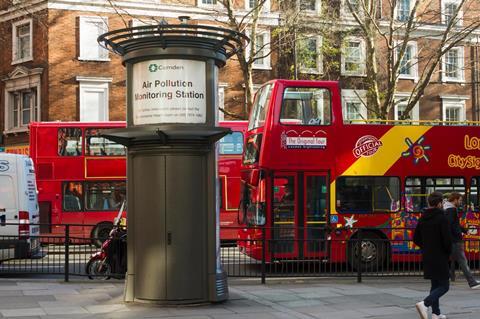
‘Each of London’s 33 boroughs has a minimum of one and up to half a dozen analysers,’ he explains. These monitoring sites form part of the London Air Quality Network (LAQN) and vary in size from one the size of a post box on Oxford Street to the huge shipping container opposite Madame Tussauds on Marylebone road. Some of the sites measure a single pollutant, such as NO2 or particulate matter (PM), in a location where boroughs are keen to closely monitor air pollution, and others measure the entire range of legislated air pollutants. The large site on Marylebone road and another in South Kensington also take additional measurements solely for research purposes.
For the LAQN, ‘data is generally collected every 15 minutes and rounded up to hourly reports’, Kelly says. This is then published online with a one-hour time lag to allow for data processing. This data is primarily collected for legislative purposes, but also used for research and by people concerned about the health effects of urban air pollution.
‘The data is used for members of the public who feel that they are sensitive to air pollution. They may be looking at a site which is close to home or close to where they work,’ says Kelly. ‘If they have a respiratory condition such as asthma or chronic obstructive pulmonary disease, they may use that information to ensure that they’ve got their medication with them that day. We have other people that use it to determine when and where they exercise.’
Accidently making things worse
Although we now have a pretty good idea of the air pollution levels in many different parts of London and many other major cities across the world, figuring out how best to reduce these is still problematic. And a key concern is to avoid in the rush to tackle one issue accidently creating another. The promotion and modernisation of diesel cars is a historic example of this.
In 2001, then UK chancellor Gordon Brown introduced tax incentives for diesel cars because they emit less CO2 than those powered by petrol. As a result, their numbers on UK roads rocketed, from around 5% in the early 1990s to almost 40% today. (Similar incentives and therefore rises were seen across the EU.) But there is a growing realisation that diesel vehicles produce significantly more nitrogen oxides (known collectively as NOx) than their petrol counterparts.
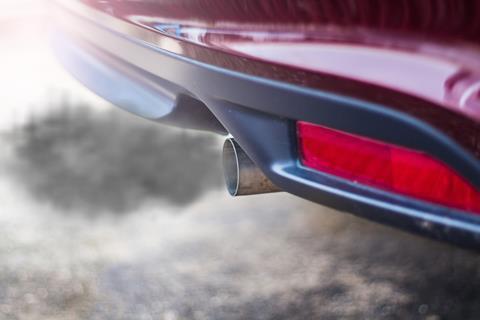
And the make-up of the gases in the emitted NOx has also changed in the last decade or so – in a bad way. NO2 is much more concerning from a health perspective than NO. ‘Historically, road vehicles emitted just about all their NOx in the form of NO, with very little NO2,’ explains David Carslaw, an urban air pollution expert at University of York, UK. ‘Over the past 10 or so years diesel vehicles started to be fitted with oxidation catalysts. These are very effective at reducing pollutants such as carbon monoxide and hydrocarbons. One of the side effects is that they don’t change the total NOx, but they help oxidise NO to NO2. That’s why the introduction of oxidation catalysts on diesel vehicles has actually increased the amount of NO2 that’s being directly emitted by the vehicles, rather than being formed in the atmosphere which would be the usual main route. That’s something that got progressively important over time. Five years ago, diesel vehicles then started to be fitted with particle filters which again rely on strong oxidation catalysts that oxidise the NO to NO2.’
Mixed up in all this is the Volkswagen emissions scandal. In 2015 it came to light that the VW cars when on a flat bed for emissions testing would pass their emissions through a system that traps and breaks down NO2. Under normal road conditions the traps were bypassed to save fuel. This test-cheating software meant that the cars were found to be releasing between nine and 38 times the permitted emissions of nitrogen oxides in the US (where the scandal first broke). Millions of VW vehicles worldwide are now being recalled to fix the issue. And other car companies have come under scrutiny for similar offences too.
To fully grasp how wrong the push towards diesel vehicles was for air pollution, it helps to understand how much cleaner petrol cars are now than two decades ago. ‘Petrol vehicles now have very efficient three-way catalysts,’ Carslaw says. ‘Emissions from modern petrol vehicles are actually very low.’
But as the VW trickery implies, it is also technically possible to reduce NOx emissions from diesel cars. ‘In the last year we have started seeing specific technology fitted to new diesel cars that reduce emissions of NOx; technologies including selective catalytic reduction and NOx traps,’ says Carslaw. But as he explains, it will take time for these to make headway with air pollutant levels. ‘The average car lasts 10–15 years on the road, and so it will take time for benefits to be seen in air quality.’
And even so the urban environment remains challenging for these technologies. In towns and cities there tends to be lots of stop–start and relatively slow driving conditions. ‘Some of the new technologies, such as selective catalytic reduction, require hot exhaust temperature conditions. They are very effective at higher temperatures, but under lower temperatures can be less effective,’ says Carslaw.
Urban pollution is being closely monitored to ensure these new technologies don’t have their own unintended consequences in the future. ‘With selective catalytic reduction there is the risk of emission of ammonia and the greenhouse gas nitrous oxide [N2 O]. While all these systems are working properly, the emissions of these other components would be very low but we need to maintain experimental evidence of what’s actually happening to make sure that we don’t accidentally make some other issues worse,’ Carslaw says. ‘It’s going to be important to make sure that these technologies remain efficient for the entire lifetime of the car.’
Source apportionment
But while pollutants from vehicle exhausts may be heading downwards, researchers are just starting to realise what other ways our cars may be polluting the urban air. ‘Particles from traffic that come from non-exhaust sources are a hot focus area,’ explains University of Birmingham’s Harrison. ‘Particle traps on diesels have been reducing emissions of particles from their exhausts for a number of years, but particles that come from the wear of brakes and tyres, and from the suspension of particles from the road surface, are probably not decreasing. We don’t actually have very good time series of their concentration, but signs are they’re not decreasing.’
One of the trickiest parts of air PM research is figuring out where each of the different particles has come from. For regulatory reasons all the particles of a particular size may be lumped together, but for research purposes it is necessary to separate them out. Research-focused monitoring stations, such as the one run by Kelly’s team in Marylebone road, have equipment capable of analysing particle composition.

‘Some of the instruments will analyse the particle composition and tell you how much of each of the different elements are in it,’ says Kelly. ‘Each source emits a constant pattern of individual fragments or components, and doing statistical analysis of high resolution data can determine the contributions of each source to the overall [particle] load,’ explains Urs Baltensperger, head of the laboratory for atmospheric chemistry at the Paul Scherrer Institute in Switzerland. This process is known as source apportionment.
‘One major fraction of our research is to help the regulatory agencies to decide what to do in order to clean up the air, to get the biggest bang for the buck in terms of which source has a big contribution at a certain place such that an improvement on this source will have a measurable impact on the air quality,’ says Baltensperger. And both he and Jose-Luis Jimenez at the University of Colorado at Boulder, US, are focusing their efforts on aerosols.
Aerosols are particles (both man-made and natural) suspended in air. Their makeup is both inorganic (such as ammonium sulfates, metals and aluminium oxides) and organic (such are terpenes and black carbon). ‘All together these only make up 50% of the total number of particles,’ says Baltensperger, ‘The other 50% are formed only in the atmosphere.’ Gas molecules – such as SO2 and VOCs (volatile organic compounds) – are oxidised in the atmosphere and as a result of that oxidation they become less volatile and either condense on pre-existing particles or form new particles by themselves.
Understanding how these new particles form is still in the early stages. In May 2016, Baltensperger’s team published the first evidence that new particles can form from the oxidation of biogenic VOCs such as terpenes. The team used the Cloud chamber at Cern in Switzerland to mimic natural atmospheric conditions and observe particle formation. ‘We suspect that aromatic VOCs from anthropogenic sources are able to trigger new particle formation in just the same way as the biogenic VOCs but this has not been shown yet,’ says Baltensperger.
Meanwhile Jimenez’s team are using advanced mass spectrometry techniques to determine the make-up and therefore source of urban air pollution. ‘We participated in a large study in Los Angeles a few years ago, so we are continuing to analyse those data, and try to understand what fraction is from cooking, what fraction is from cars, etc,’ he says.
This is difficult enough for particles that enter the air already intact (known as primary aerosols), but even harder for those that entered as gases and then formed into particles over time through reactions with sunlight or other chemicals in the atmosphere (known as secondary aerosols). ‘The source of secondary aerosols is very uncertain, and there are a number of studies published that reach completely opposite conclusions,’ says Jimenez. ‘That remains another very active research area.’
Health effects
The health effects of each of air pollution’s different components is still not fully understood. Legislation may currently group particles together according to their size, but whether this is logical or not is still up for discussion. Just because particles are the same size does not mean they will have the same effect on the body. ‘We are not yet sure if all particles are equally toxic,’ says Kelly.
‘We are still in a state of infancy in terms of knowing which class of compounds contributes how much to a certain toxic effect in our lungs,’ agrees Baltensperger. ‘We know that increased air pollution has caused increased mortally but we still do not know what is actually causing this.’
Understanding the mechanism by which specific components of aerosols impair human health is another of Baltensperger’s research interests. His team have been simulating atmospheric chemistry processes in a cloud chamber, and then feeding the resulting aerosols at various stages in the ageing process to living lung cells. ‘We then measure the effects of these aerosols on the lung cells,’ he explains. ‘The ideal case would be to have a chemical tracer for each health impairment on the human body, but that is not possible. The work should however go in this direction, using as many proxy compounds that we can for a specific health impairment.’
The hope is that improved knowledge of the health effects of individual pollutants coupled with a much better idea of where these pollutants come from will eventually help direct more informed air policy decisions and ultimately improve human health. Air pollution is known to increase the risk of many diseases including respiratory conditions, heart disease, stroke and cancers. The numbers of people affected are phenomenal. In February 2016, the Global Burden of Disease enterprise reported that more than 5.5 million people die prematurely each year due to air pollution – and the WHO say air pollution is linked to one in 10 deaths of children under 5.
Nina Notman is a science writer based in Salisbury, UK
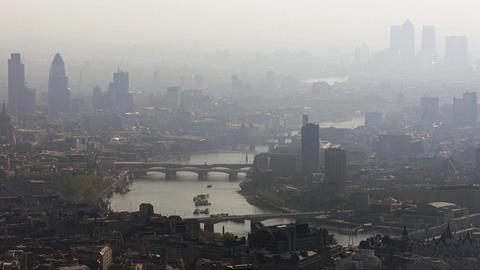
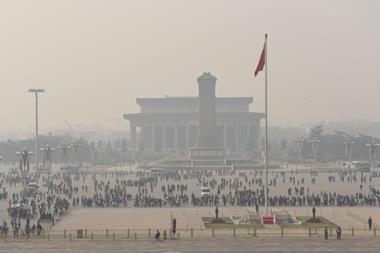
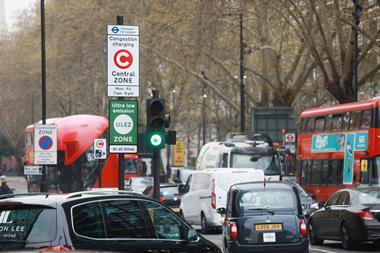
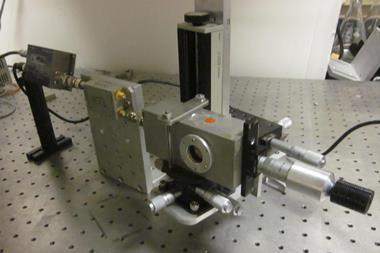
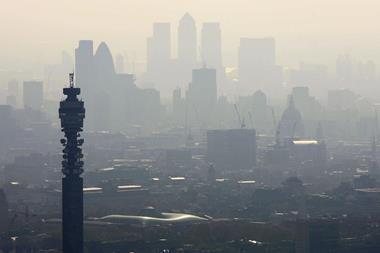








1 Reader's comment